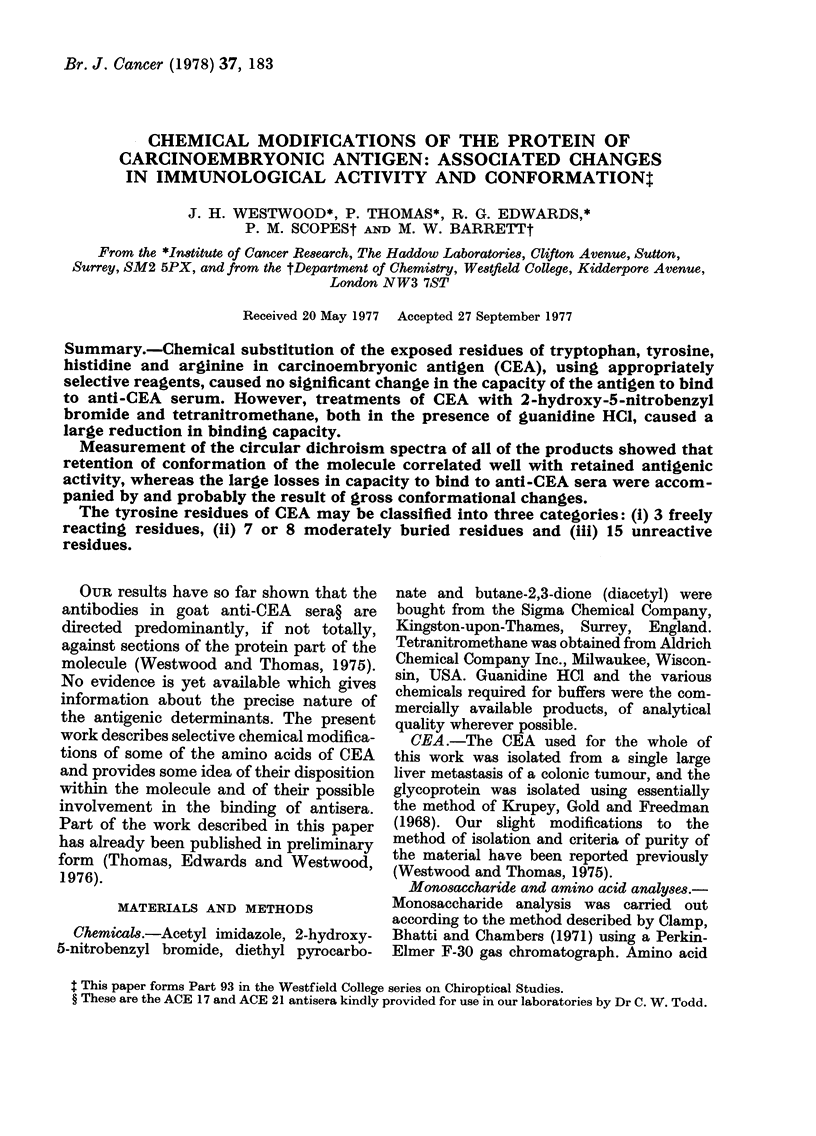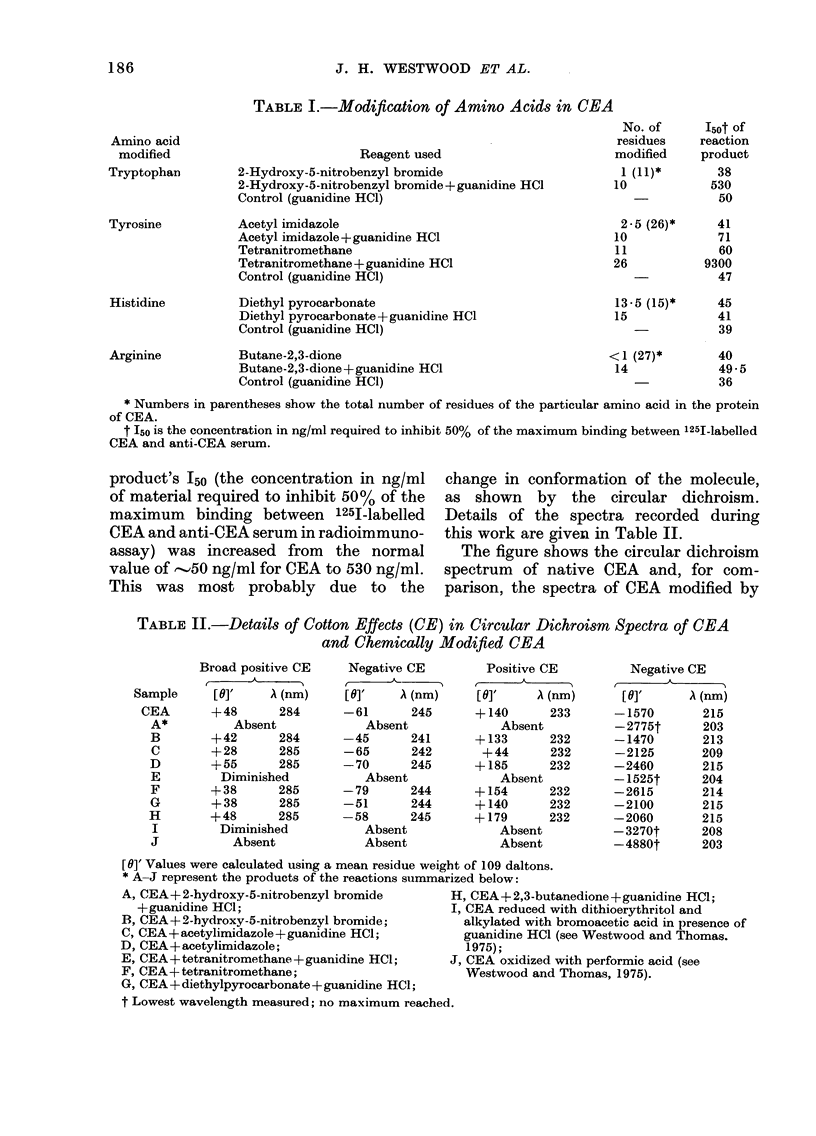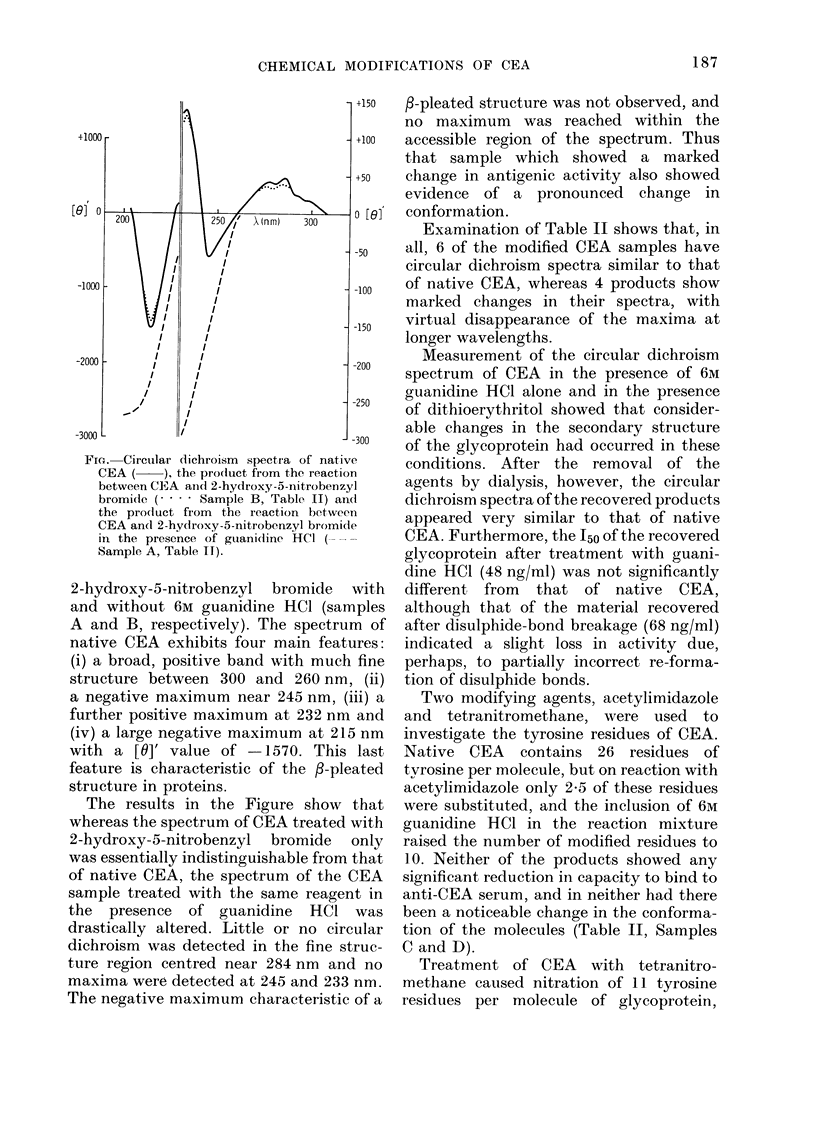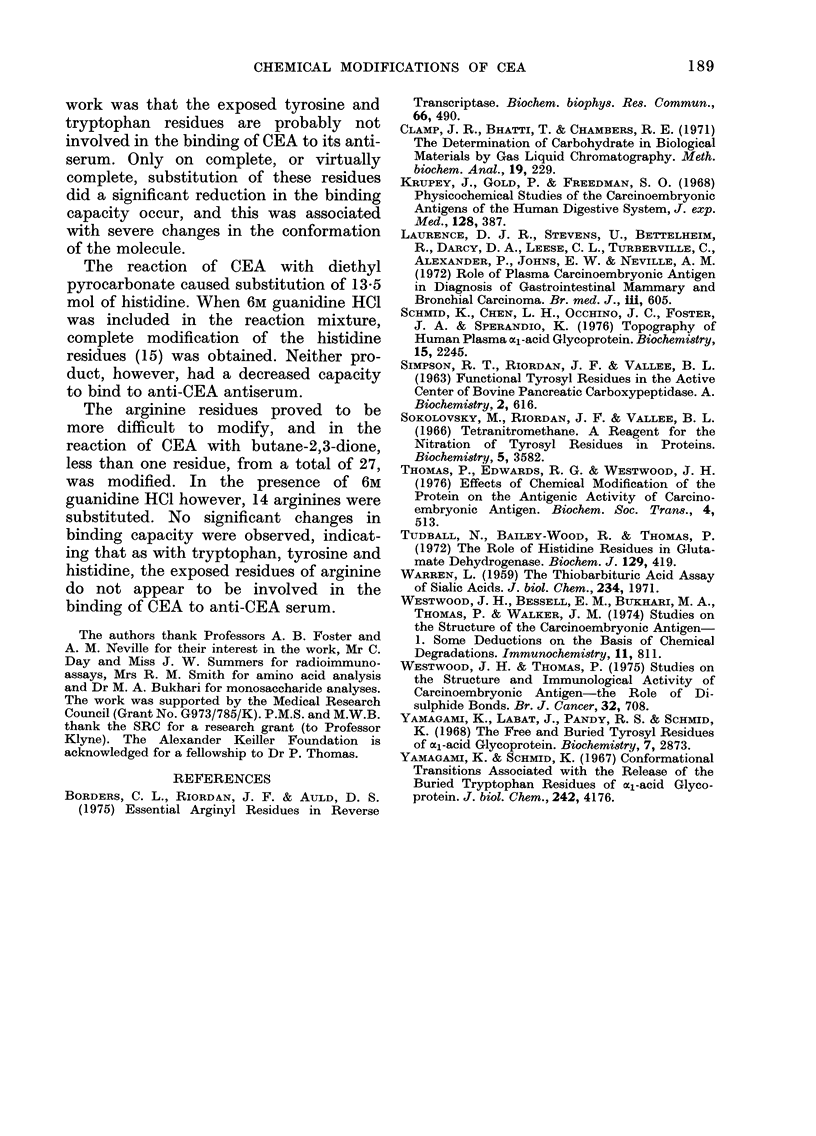Abstract
Chemical substitution of the exposed residues of tryptophan, tyrosine, histidine and arginine in carcinoembryonic antigen (CEA), using appropriately selective reagents, caused no significant change in the capacity of the antigen to bind to anti-CEA serum. However, treatments of CEA with 2-hydroxy-5-nitrobenzyl bromide and tetranitromethane, both in the presence of guanidine HCl, caused a large reduction in binding capacity. Measurement of the circular dichroism spectra of all of the products showed that retention of conformation of the molecular correlated well with retained antigenic activity, whereas the large losses in capacity to bind to anti-CEA sera were accompanied by a probably the result of gross conformational changes. The tyrosine residues of CEA may be classified into three categories: (i) 3 freely reacting residues, (ii) 7 or 8 moderately buried residues and (iii) 15 unreactive residues.
Full text
PDF






Selected References
These references are in PubMed. This may not be the complete list of references from this article.
- Borders C. L., Jr, Riordan J. F., Auld D. S. Essential arginyl residues in reverse transcriptase. Biochem Biophys Res Commun. 1975 Sep 16;66(2):490–495. doi: 10.1016/0006-291x(75)90537-9. [DOI] [PubMed] [Google Scholar]
- Clamp J. R., Bhatti T., Chambers R. E. The determination of carbohydrate in biological materials by gas-liquid chromatography. Methods Biochem Anal. 1971;19:229–344. doi: 10.1002/9780470110386.ch3. [DOI] [PubMed] [Google Scholar]
- Krupey J., Gold P., Freedman S. O. Physicochemical studies of the carcinoembryonic antigens of the human digestive system. J Exp Med. 1968 Sep 1;128(3):387–398. doi: 10.1084/jem.128.3.387. [DOI] [PMC free article] [PubMed] [Google Scholar]
- Laurence D. J., Stevens U., Bettelheim R., Darcy D., Leese C., Turberville C., Alexander P., Johns E. W., Neville A. M. Role of plasma carcinoembryonic antigen in diagnosis of gastrointestinal, mammary, and bronchial carcinoma. Br Med J. 1972 Sep 9;3(5827):605–609. doi: 10.1136/bmj.3.5827.605. [DOI] [PMC free article] [PubMed] [Google Scholar]
- SIMPSON R. T., RIORDAN J. F., VALLEE B. L. FUNCTIONAL TYROSYL RESIDUES IN THE ACTIVE CENTER OF BOVINE PANCREATIC CARBOXYPEPTIDASE A. Biochemistry. 1963 May-Jun;2:616–622. doi: 10.1021/bi00903a039. [DOI] [PubMed] [Google Scholar]
- Schmid K., Chen L. H., Occhino J. C., Foster J. A., Sperandio K. Topography of human plasma alpha1-acid glycoprotein. Biochemistry. 1976 Jun 1;15(11):2245–2254. doi: 10.1021/bi00656a001. [DOI] [PubMed] [Google Scholar]
- Sokolovsky M., Riordan J. F., Vallee B. L. Tetranitromethane. A reagent for the nitration of tyrosyl residues in proteins. Biochemistry. 1966 Nov;5(11):3582–3589. doi: 10.1021/bi00875a029. [DOI] [PubMed] [Google Scholar]
- Thomas P., Edwards R. G., Westwood J. H. Effects of chemical modification of the protein on the antigenic activity of carcinoembryonic antigen. Biochem Soc Trans. 1976;4(3):513–515. doi: 10.1042/bst0040513. [DOI] [PubMed] [Google Scholar]
- Tudball N., Bailey-Wood R., Thomas P. The role of histidine residues in glutamate dehydrogenase. Biochem J. 1972 Sep;129(2):419–425. doi: 10.1042/bj1290419. [DOI] [PMC free article] [PubMed] [Google Scholar]
- WARREN L. The thiobarbituric acid assay of sialic acids. J Biol Chem. 1959 Aug;234(8):1971–1975. [PubMed] [Google Scholar]
- Westwood J. H., Bessell E. M., Bukhari M. A., Thomas P., Walker J. M. Studies on the structure of the carcinoembryonic antigen. I. some deductions on the basis of chemical degradations. Immunochemistry. 1974 Dec;11(12):811–818. doi: 10.1016/0019-2791(74)90302-4. [DOI] [PubMed] [Google Scholar]
- Westwood J. H., Thomas P. Studies on the structure and immunological activity of carcinoembryonic antigen - the role of disulphide bonds. Br J Cancer. 1975 Dec;32(6):708–719. doi: 10.1038/bjc.1975.282. [DOI] [PMC free article] [PubMed] [Google Scholar]
- Yamagami K., Labat J., Pandey R. S., Schmid K. The free and buried tyrosyl residues of alpha 1-acid glycoprotein. Biochemistry. 1968 Aug;7(8):2873–2879. doi: 10.1021/bi00848a025. [DOI] [PubMed] [Google Scholar]
- Yamagami K., Schmid K. Conformational transitions associated with the release of the buried tryptophan residues of alpha-1-acid glycoprotein. J Biol Chem. 1967 Sep 25;242(18):4176–4181. [PubMed] [Google Scholar]


